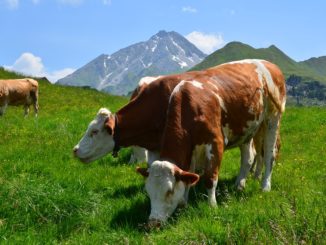
The Environment Committee’s compromise text on the Nature Restoration Law sees few significant changes to the main targets, including in the contentious area of rewetting organic soils. Other relevant restoration actions are however more restricted to Natura 2000 sites than in the Commission proposal. Oliver Moore reports. (Updated 08/06/23 at 12.08 for extra info on high diversity landscape features, and at 12.30 CET for additional info on annex iv. Refresh to see if not visible)
The Environment Committee’s compromise text on the Nature Restoration Law sees few significant changes to the targets, including in the contentious area of rewetting organic soils. In a draft seen by ARC2020 however, other relevant restoration actions are to be restricted to Natura 2000 sites, compared to the Commission proposal.
All major political groups – the Left, Greens, Renew (RE), the Socialists and Democrats (S&D) – came together to trash out this compromise set of amendments last week, on the same day as the centre-right European People’s Party (EPP) walked out of the discussions.
Rewetting targets retained
Despite reports to the contrary, the Compromise retains rewetting targets, with some adjustments few environmentalists would query.
All significant rewetting targets have been retained, with just one adjustment to increase the burden-sharing between farming and other sectors to reach these rewetting targets.
The new, proposed wording for the relevant section in article 9 paragraph 4 reads:
“Member States may put in place restoration measures to rewet organic soils that constitute drained peatlands under land uses other than agricultural use and peat extraction and count those rewetted areas as contributing, up to a maximum of 40%, to the achievement of the targets”
In effect, this means forestry and potentially other locations with peaty soil will have to do more, with member states allowed count this as a larger part of the overall targets. This can reduce the level of change required by farmers with organic (peaty) soils, if member states choose to avail of this 40% option – the previous text saw this option only reach 20%.
For “organic soils in agricultural use constituting drained peatlands” the 2030 target of 30% restored, with a quarter rewetted, is retained. Similarly, the 2040 and 2050 targets also remain the same – 50% by 2040, with half rewetted; 70% by 2050, half rewetted.
The following is also added to paragraph 4: “Member States shall incentivise rewetting on a voluntary basis, and aim to make rewetting an attractive option for farmers and landowners.”
To get the ENVI committee compromise text in full, sign up to our weekly newsletter here
Trading Rewetting Targets
These are however weaker than December draft report ‘s targets from the ENVI Committee’s rapporteur Cesar Luena (download this here – ENVI-PR-737282_EN) This would have seen the restoration targets remain the same, but the rewetting targets higher.
This compares to the proposed amendments in the AGRI Committee which we revealed two weeks ago, which would have seen all rewetting targets removed, the first restoration target moved out to 2035, and all restoration and rewetting targets for 2050 axed completely.
Nature Restoration Law | Agri Committee’s Amendments Revealed – Reduced Targets, Increase Exemptions
Importantly, this set of AGRI amendments were proposed by the big three groups in the Parliament – Renew (RE), the Socialists and Democrats (S&D), and the EPP.
Overall then, it is something of a suprise that the rewetting targets – the most contentious aspect of the NRL so far – have remained unchanged from the Commission’s targets, with one adjustment few environmentally minded campaigners would argue with. Rewetting is rewetting after all, wherever it happens.
Concessions – and light
An important concession granted in the new ENVI compromise text does however limit restoration measures to Natura 2000 sites, and reject Commission targets for high diversity landscape features to cover 10% of the Union’s agricultural area by 2030 – this is replaced with a a reference to 3 billion additional trees by 2030, which is also a Commission target.
(Update) However, the Commission’s ‘targets’ of 10% are in fact only referenced as a monitoring tool in article 14, and an indicator reference in article 9 itself.
That said, and more importantly Annex IV sees the introduction of productivity elements into biodiversity areas – a pattern familiar to CAP-watchers.
Rather than exclusively retain high diversity landscape features as areas without productivity, the word “cannot” is changed to “can”, albeit with some caveats. This now allows for “organic fertilizers” and “low risk pesticides” pesticides to be used, “only if such use is beneficial for biodiversity”.
Non-detioriation principle has also been weakened. Rather than requiring non-deterioration, the proposal asks member states to “adopt appropriate and effective measures with the aim to prevent over time the deterioration of areas” outside the Habitats Directive’s scope.
There is also, finally, and for the first time, a reference to light pollution introduced. This sees an attempt to start to reduce light pollution across the EU by 2030, albeit without set targets. Light pollution is skyrocketing and has has a major negative impact on insects and birds in particular, comparable to pesticides.
The remaining political process
ENVI Committee votes on 15 June, with indications the vote will still be tight, despite the Compromise agreement being reached by Greens, Left, S&D and RE. This would typically be a working majority. However our early analysis of likely votes indicates its all still to play for, including with the four independents/non-aligned.
Should the Parliament’s ENVI committee pass the compromise text, a plenary vote in the parliament will occur. Should this pass, then the Parliament has an adopted position on the Nature Restoration Law. stage.
Concurrently, the Council of Ministers – national Ministers from EU member states – is developing its own text. This is likely to be weaker than either the the Parliament’s compromise or the Commission’s original version. Certainly this is the path as seen in CAP and similar legislative processes.
Once the Council and the Parliament have their own agreed positions finalised, the two executives debate and compromise, to come up with a final agreed text of the Nature Restoration Law, to come into effect in 2024.
To get the ENVI committee compromise text in full, sign up to our weekly newsletter here
More
Nature Restoration Law News – Environment Committee Edging Towards Deal as EPP walks out
How will Environment Committee vote on Nature Restoration Law?
Agri MEPs Vote to Reject the Nature Restoration Law – what’s next?
Nature Restoration Law | Agri Committee’s Amendments Revealed – Reduced Targets, Increase Exemptions




